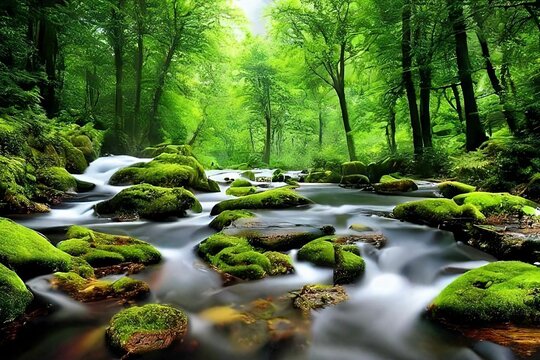Pulse of Information
Stay updated with the latest news and insights.
When Nature Paints: A Tale of Color and Light
Discover the vibrant world where nature reveals its stunning colors and light—join our journey through this breathtaking visual tale!
Exploring the Palette of Nature: How Seasons Transform Our Landscape
The beauty of our planet is most vividly expressed through the palette of nature that transforms with each passing season. In spring, a vibrant tapestry of colors emerges as blossoms burst forth, painting the landscape with hues of pink, yellow, and white. The emergence of leaves brings a lush green that fills the air with fresh energy, inviting creatures great and small to celebrate renewal. As we transition into summer, the landscape shifts into a cauldron of rich greens and brilliant blues, where the sun’s warmth nurtures both flora and fauna, creating a robust harmony of life.
As the days shorten and autumn descends, nature undergoes a spectacular metamorphosis. Forests ignite in a blaze of orange, red, and gold, creating breathtaking vistas that beckon us to explore. Nature's palette showcases the beauty of change, illustrating a world in flux. The chill of winter sweeps in next, covering the landscape in a serene blanket of white, transforming familiar scenes into tranquil works of art. These seasonal cycles remind us of the powerful and poignant ways that nature continuously evolves, inviting us to appreciate the fleeting beauty of each stage.

The Science Behind Nature's Colors: Why Leaves Change in Autumn
The vibrant display of autumn leaves is a remarkable phenomenon driven by the intricate processes of photosynthesis and the breakdown of chlorophyll, the green pigment found in plants. As days shorten and temperatures drop, trees prepare for the winter months by halting the production of chlorophyll. This cessation allows the other pigments present in the leaves, namely carotenoids and anthocyanins, to emerge. Carotenoids are responsible for the yellow and orange hues, while anthocyanins produce reds and purples. The resulting palette can transform landscapes into breathtaking canvases, demonstrating nature's artistic flair.
The science behind this transformation is also influenced by environmental factors such as light exposure and temperature. In sunny days followed by cool nights, the production of anthocyanins is enhanced, leading to more intense red leaves. Additionally, the soil moisture can affect the overall brightness of autumn colors; trees under stress due to drought may exhibit duller shades. This combination of biochemistry and climatic conditions not only adds to the aesthetic beauty of fall but also serves a functional purpose, helping trees conserve resources as they prepare for the energy-saving dormancy of winter.
Chasing Sunsets: Capturing the Magic of Light in Nature Photography
Chasing sunsets is more than just a hobby; it's a pursuit that allows photographers to engage with the breathtaking beauty of nature. As the sun dips below the horizon, the sky transforms into a canvas of vibrant colors ranging from deep oranges to soft pinks. To truly capture the magic of light during this fleeting moment, one must be prepared and patient. Consider the following tips to enhance your sunset photography experience:
- Scout your location in advance.
- Bring a tripod for stability.
- Experiment with different angles to find the best composition.
When it comes to nature photography, lighting is everything. The golden hour, which occurs shortly before sunset, offers optimal conditions to emphasize the rich textures and colors of your surroundings. Embrace the natural elements by including silhouettes of trees or mountains in your shot, as these can add depth and contrast to the vibrant sky. Remember, the key to truly mastering sunset photography lies not only in your technical skills but also in your ability to appreciate the moment as it unfolds, allowing you to capture a spectacular scene that reflects the beauty of nature in all its glory.